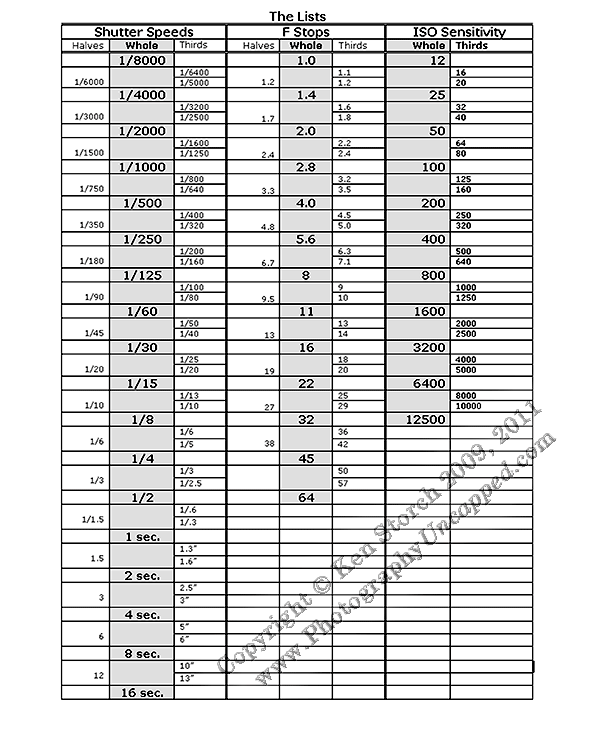
It is due to the very wide aperture opening. Sometimes what happens is that the person’s eye will be in more focus than the nose or other part of the body. It does not mean that you must select the maximum possible aperture in your camera. You can see that the background tree is blurrier at an aperture value of f2.8.

In such cases, you want a shallow depth of field.įrom the infographic, it is clear that a wider aperture corresponds to a shallow depth of field. Sometimes you want only your subject to be in focus. So, try to start from this value and play around it in the camera to get the perfect value for your lighting conditions. If you are into landscape photography, then you want everything to be in focus.įrom the f stop chart, you can see that things are more in focus from f16 onwards. It will help you get a wider depth of field thereby getting everything in focus. If you want to get both subject and the background elements in focus, then you will have to for a narrow aperture. Different aperture values need to be set in different situations and in different types of photography. You can’t use the same aperture values in all situations. So, let us see, how you can use it in your photography. Now, you know, what an aperture stop chart is all about.
F stop chart iso#
So, the image exposure gets reduced when the f-number is increased (considering shutter speed and ISO values are kept constant throughout). The light entering into the image sensor of the camera decreases as we increase the f-number. The last column in the infographic will give you an idea about the variation in exposure with a change in aperture opening. Now, it will be quite clear 😎, how varying f-stop impacts the depth of field in an image. In all three images, the focus point is on the first 50mm lens. So, we need to reduce the aperture beyond f11.0 in this situation to get a picture with all the details of the three lens. In the third image, the 50mm and the 17-40mm lens appear sharp and there is some amount of blur in the 10-20mm lens, which is at the last. But, still the second lens is not as sharp as the 50mm lens in the front. In the second image, an f-stop of f5.6 makes the markings on the second lens (17-40mm lens) visible. It is possible with the help of a wide aperture of f1.8 in the RF 50mm lens. Both the lenses that are behind the 50mm lens appear blurred. In the first image, only the 50mm lens, which is in the front is in focus. Both the tree and the man are in focus from an aperture of f16 and beyond. When you increase the f-number, you can see that the tree is coming to focus gradually. You can see that the person standing in front of the tree is in focus and the tree appears to be blurred when the aperture is at f2.8, which corresponds to a large opening. The fifth column in the infographic represents the variation of Depth of field with respect to change in aperture values. Depth of FieldĪnother important parameter that is controlled by the Aperture is the Depth of Field. Some cameras will allow you to change this 1/3 stops to ½ stops. Thus, it gives you better control of light entering the camera. In most of the DSLR/Mirrorless cameras, you can increase/decrease the Aperture by 1/3 Stops. So, between f2.8 and f4.0, we will have two more aperture values f3.2 and f3.5. In the case of 1/3 stop, we are dividing a stop of light into 3 equal parts.
F stop chart full#
Here, basically, you are dividing one full stop into a half stop. If you go with these values then you will get half of the light that corresponds to next full stop. If you see the ½ stop column in the chart, you can see that there is one aperture value in between each successive full stop. In other words, the light falling in the camera sensor gets reduced by half when you decrease the aperture by one full stop. Here, the f2.8 aperture allows one stop of extra light into the camera when compared to f4. If aperture f2.8 allows x amount of light into the camera, then aperture f4 will allow x/2 amount of light. You can see in the f stop chart that the opening is really big for an aperture value of f2.8 when compared to f11. The term “F stop” can be really confusing if you are a beginner in photography.Ī smaller f-number corresponds to a larger aperture opening and a larger f-number corresponds to a smaller opening. These values correspond to the Aperture value in your camera. You can see three columns- full stop, ½ stop, and 1/3 stop. In this f stop chart infographic, we can see that the Aperture opening is arranged in descending order (w.r.t size of the opening). ApertureĪs you know, the aperture is the opening of the lens through which light enters the camera. We can divide this infographic into 4 sections- Aperture, F stops, Depth of Field, and Exposure. This visual chart will make photography easy for you 😎. The F stop chart infographic is shown above.
F stop chart how to#
How to Check the Maximum F-stop of a Lens? 😎.


 0 kommentar(er)
0 kommentar(er)
